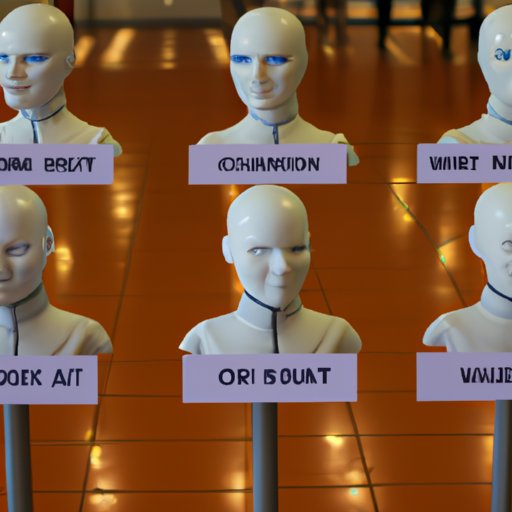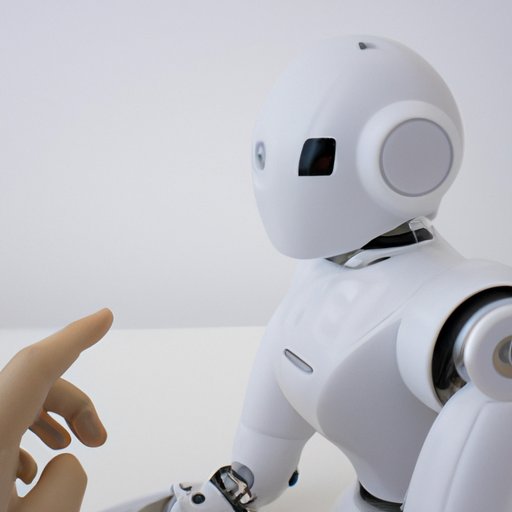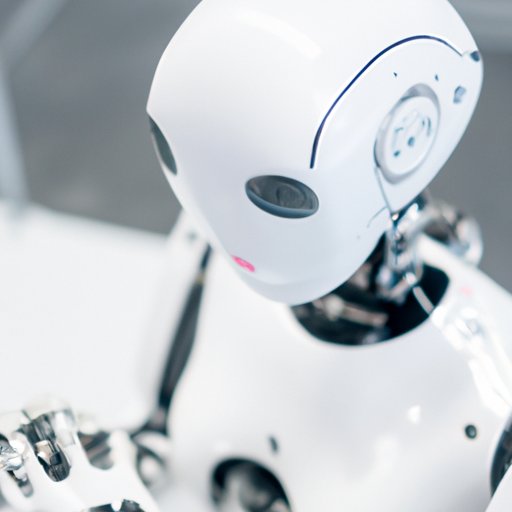Introduction
Humanoid robots are machines designed to look and act like humans. They have advanced artificial intelligence (AI) capabilities, allowing them to interact with their environment and respond to external stimuli. While they have been around for decades, recent advances in technology have made it possible to create humanoid robots that are more sophisticated and life-like than ever before.
This article explores how much humanoid robots cost, as well as the key factors that influence their prices. We’ll compare different manufacturers and examine the benefits of investing in one. By the end of this article, you should have a better understanding of the costs associated with humanoid robots and be able to make an informed decision about which model is right for you.

Comparing the Cost of Humanoid Robots Across Different Manufacturers
The price of humanoid robots can vary significantly depending on the manufacturer and the features they offer. For example, SoftBank Robotics’ Pepper robot costs around $8,000, while UBTECH’s Alpha 2 robot retails for around $2,700. Other manufacturers, such as Honda and Sony, have also released humanoid robots at higher price points.
It’s important to note that these prices are just starting points, and there are many additional costs associated with owning and operating a humanoid robot. These include software and programming fees, maintenance costs, and installation fees. It’s also important to consider the cost of any additional accessories that may be required for your robot, such as batteries or charging docks.
Analyzing the Factors that Impact Humanoid Robot Prices
There are several factors that can influence the cost of a humanoid robot. Let’s explore some of the most important ones:
Size and Complexity
The size and complexity of a humanoid robot will affect its price. Smaller robots tend to be cheaper, but they may lack the features and capabilities of larger models. On the other hand, larger and more complex robots will cost more but may offer more advanced features, such as voice recognition or facial recognition.
Materials Used
The materials used in the construction of a humanoid robot can greatly influence its cost. Robots made from plastic components tend to be cheaper, while those made from metal components are generally more expensive. Additionally, robots with more complex designs may require more costly materials.
Quality of Build
The quality of a humanoid robot’s build will also affect its cost. Robots with higher-quality components and construction will be more expensive, while those with lower-quality components may be cheaper. It’s important to consider the long-term durability of a robot when making a purchase, as cheaper models may not last as long.
Software and Programming
The software and programming required to operate a humanoid robot can also affect its cost. More advanced robots may require specialized software, while simpler models may only need basic programming. Additionally, some manufacturers may charge extra fees for software updates or support services.
Additional Features
Finally, some humanoid robots offer additional features that can influence their cost. Examples include sensors, cameras, and speakers. The more features a robot has, the more expensive it will likely be.
Exploring the Benefits of Investing in a Humanoid Robot
In addition to the various features and capabilities offered by humanoid robots, there are several potential benefits associated with investing in one. According to a study conducted by the University of California, Santa Cruz, “the use of humanoid robots can lead to increased efficiency, more engaging interactions, enhanced safety, and educational opportunities.”
Increased Efficiency
One of the primary benefits of investing in a humanoid robot is increased efficiency. Humanoid robots are capable of performing tasks quickly and accurately, reducing the amount of time needed to complete them. This can free up resources for other areas of the organization, leading to greater overall productivity.
More Engaging Interactions
Another benefit of humanoid robots is that they can provide more engaging interactions with customers. Humanoid robots are able to understand and respond to verbal commands, providing a more natural conversation experience. This can help create a more enjoyable customer experience and increase customer satisfaction.
Enhanced Safety
Humanoid robots can also help enhance safety in the workplace. Many models are equipped with sensors that can detect potential hazards and alert workers to take appropriate precautions. This can help reduce the risk of accidents and injuries, resulting in a safer working environment.
Educational Opportunities
Finally, humanoid robots can provide educational opportunities for students. By interacting with humanoid robots, students can gain a better understanding of robotics and AI technology. This can open up new career paths and provide valuable skills that can be used in the future.

Examining the Cheapest Humanoid Robots Available
If you’re looking for a low-cost option, there are several budget models available. The Inmoov Open Source Project offers a 3D-printed humanoid robot that can be built for around $1,500. The robot comes with basic features, such as speech recognition and facial recognition, but lacks the more advanced features found on higher-end models.
Pros and Cons of Budget Models
The main advantage of budget models is that they can provide a good introduction to humanoid robots without breaking the bank. However, these robots often lack the features and capabilities of more expensive models. Additionally, they may require more frequent maintenance and repairs due to their lower-quality components.

Investigating the Most Expensive Humanoid Robots on the Market
At the other end of the spectrum, there are several high-end models available. Boston Dynamics’ SpotMini robot costs around $74,500 and is capable of navigating complex environments and performing a variety of tasks. Honda’s ASIMO robot is even more expensive, retailing for around $150,000.
Advantages of Investing in High-End Models
The main advantages of investing in a high-end model are the advanced features and capabilities they offer. These robots are equipped with the latest technologies, such as facial recognition, voice recognition, and obstacle avoidance. Additionally, they are typically built with higher-quality components that are more durable and require less maintenance.
Conclusion
Humanoid robots can range in price from budget models to high-end models. When choosing a model, it’s important to consider the size, materials, quality of build, software and programming, and additional features. There are also several potential benefits associated with investing in a humanoid robot, including increased efficiency, more engaging interactions, enhanced safety, and educational opportunities.
To sum up, the cost of a humanoid robot depends on a variety of factors, so it’s important to do your research and compare different models before making a purchase. With the right model, you can enjoy the benefits of owning a humanoid robot without breaking the bank.
(Note: Is this article not meeting your expectations? Do you have knowledge or insights to share? Unlock new opportunities and expand your reach by joining our authors team. Click Registration to join us and share your expertise with our readers.)
